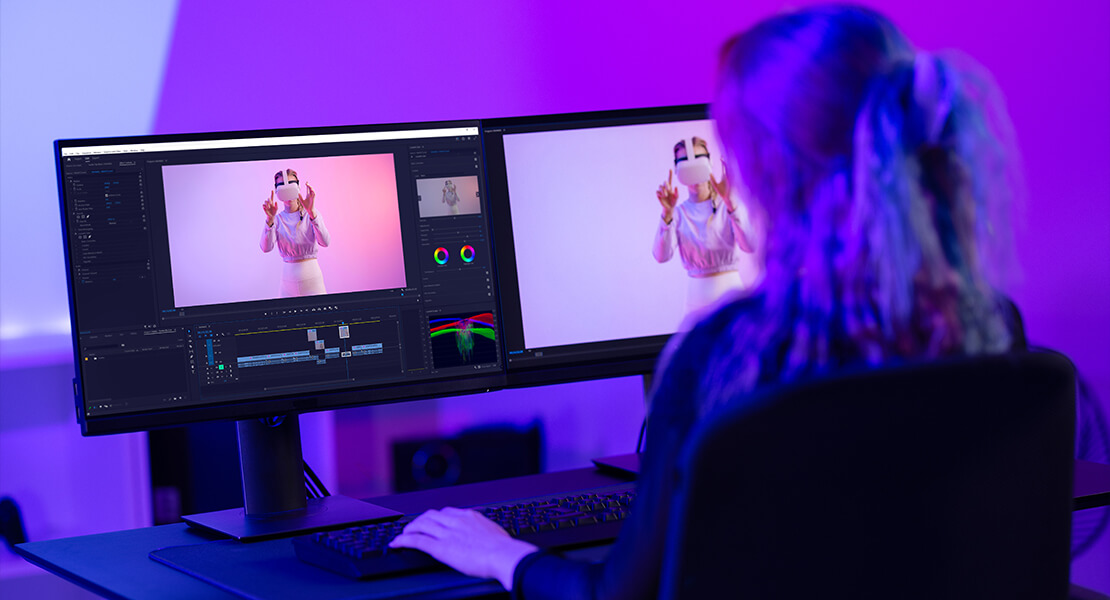
Greetings, imaginative minds! Whether you’re a seasoned professional or just a curious fan, this year is brimming with fresh trends that are set to reshape the world of animation. Let’s dive into what’s new, what’s next, and how you can stay ahead in the dynamic realm of animated storytelling.
Embracing Real-Time Rendering
Have you noticed how real-time rendering is becoming the norm? This trend is revolutionising the production process by significantly cutting down on render times and allowing for instant feedback during the creative process.
Traditionally, rendering a scene or animation could take hours or even days, depending on complexity. But with real-time rendering, you get immediate feedback. This means you can adjust lighting, textures, and camera angles on the fly and see exactly how your scene will look once it’s complete. It’s like having a magic window into your creative process, where every tweak is reflected instantly.
One of the biggest advantages here is the boost in creative freedom. When you’re not stuck waiting for a render to finish, you can experiment more boldly and try new ideas without hesitation. This rapid iteration process encourages innovation—whether you’re a seasoned professional or just starting out, you’ll find that real-time rendering opens up a world of possibilities that were once off-limits.
Another exciting aspect is the integration with game engines like Unreal Engine and Unity. These platforms have pushed the boundaries of what’s possible by bringing cinematic quality visuals to interactive experiences. Now, filmmakers, architects, and product designers can use these tools to create immersive environments and interactive demos. Real-time rendering isn’t just about faster workflows; it’s also about creating more engaging, dynamic content that can captivate audiences in ways traditional rendering methods simply can’t match.
But that’s not all. Real-time rendering is also revolutionising virtual reality (VR) and augmented reality (AR) experiences. By delivering high-quality visuals with minimal latency, it makes VR and AR environments feel incredibly lifelike and responsive. This level of realism is crucial for applications ranging from virtual tours and interactive training to cutting-edge entertainment.

In short, real-time rendering is changing the rules of the creative game. It speeds up production, enhances creative exploration, and makes high-quality, interactive experiences accessible to a wider range of creators. So, whether you’re working on a blockbuster game, a stunning architectural visualisation, or an immersive VR journey, embracing real-time rendering can help you push the boundaries of your craft. Give it a try, and see how it transforms the way you work and create!
Hybrid Animation Techniques
Imagine a world where the timeless charm of hand-drawn 2D art seamlessly meets the breathtaking depth of 3D technology. That’s exactly what hybrid animation is all about—melding traditional drawing with cutting-edge digital modelling to create stories that truly captivate your audience. When you dive into these techniques, you’re not just animating; you’re blending expressiveness with realism to craft experiences that leave a lasting impression.
Now, picture yourself pushing the boundaries of your creativity by experimenting with these innovative methods. Whether you’re bringing complex characters to life or designing entire fantastical realms, integrating these styles can give your work that unique, unforgettable spark. Hybrid animation is becoming a go-to approach for artists who want to mix the best of both worlds, creating visuals that are as rich in texture as they are dynamic in movement.
Let’s explore some groundbreaking hybrid animation techniques that are reshaping the creative landscape. By combining the strengths of various artistic mediums—each with its own unique flair—you can transform your projects into captivating visual narratives. These methods bring together multiple styles, technologies, and creative processes into a cohesive whole that not only tells a story but also stands out in today’s competitive market.
Every technique you explore will come with its own set of benefits and challenges, yet all share the same goal: to expand what’s possible in animation. By fusing traditional and modern elements, you can create work that’s both innovative and deeply personal. Whether you’re an established professional or just beginning your journey in animation, embracing these hybrid approaches opens up a world of creative possibilities.
So, if you’re ready to take your animation to the next level, consider experimenting with hybrid techniques. The fusion of 2D and 3D not only offers you a broader palette of visual tools but also invites you to tell stories in ways that are uniquely yours. Embrace the blend of styles, let your creativity soar, and watch as your animations become richer, more engaging, and truly memorable.
2D and 3D Fusion
When traditional hand-drawn 2D elements meet three-dimensional models or environments, the result is often a visually layered experience that brings the best of both worlds together. You might start with a pencil test or digital drawing, then place those characters against fully rendered 3D backdrops. This interplay lets you maintain the expressive qualities of classic animation while leveraging the depth, realism, and dynamic lighting of modern 3D techniques. The real trick lies in ensuring that the 2D and 3D elements complement each other—harmonising colours, perspective, and lighting so the final piece looks intentional rather than disjointed.
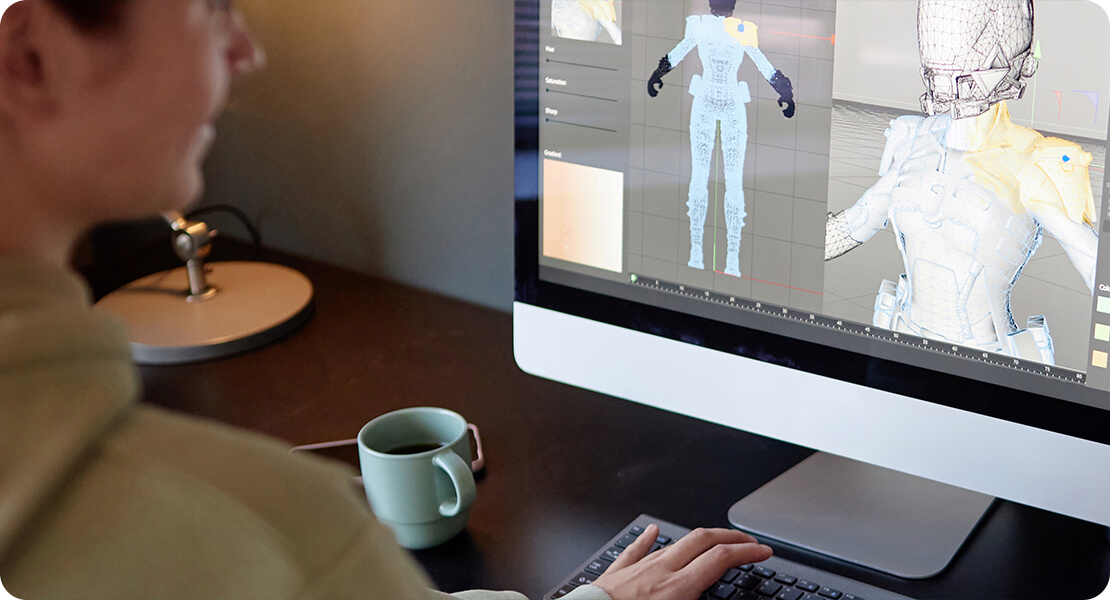
Motion Capture Paired with Keyframing
Mocap technology captures a performer’s every move, translating those movements into digital data. However, raw mocap data may lack the exaggeration or stylised expressions crucial for certain animated stories. That’s where keyframe animators step in. By refining and enhancing the captured data, they inject personality and flair into each motion. The result is a hybrid approach that merges genuine human gestures with the imaginative qualities of classic animation, striking a balance between realism and artistry.
Rotoscoping Combined with Digital Painting
In this technique, animators trace over live-action footage to capture realistic movement, then apply digital painting or effects to elevate the visuals. Rotoscoping has been around for decades, but modern tools make it far more flexible. You can add painterly textures, stylised shading, or even transform the footage into something surreal. This hybrid approach offers a powerful way to blend real-world nuance with a distinctly artistic feel, resulting in animation that feels simultaneously grounded and dreamlike.
Stop-Motion Enhanced by CGI
Stop-motion has a tactile charm that’s tough to replicate, thanks to its use of physical puppets, sets, and props. However, certain effects—like intricate lighting or dramatic weather conditions—can be time-consuming or impractical to achieve with physical materials alone. By introducing CGI elements into stop-motion scenes, you can expand the visual possibilities without losing the handmade appeal. For instance, you might add digitally animated sparks or water effects to a sequence featuring clay models, ensuring the final piece retains its organic vibe while benefiting from digital precision.
Mixed-Media Compositing
In mixed-media compositing, animators pull from various sources—live-action video, scanned textures, photographs, hand-drawn frames, and digital effects—to create one cohesive piece. This technique can be especially striking when used to illustrate layered storytelling, such as flashbacks or dream sequences. The key challenge is integrating these disparate elements in a way that feels intentional, ensuring that the final product tells a compelling story rather than appearing random or fragmented. When done right, mixed-media compositing can achieve a collage-like aesthetic that is both engaging and uniquely personal.
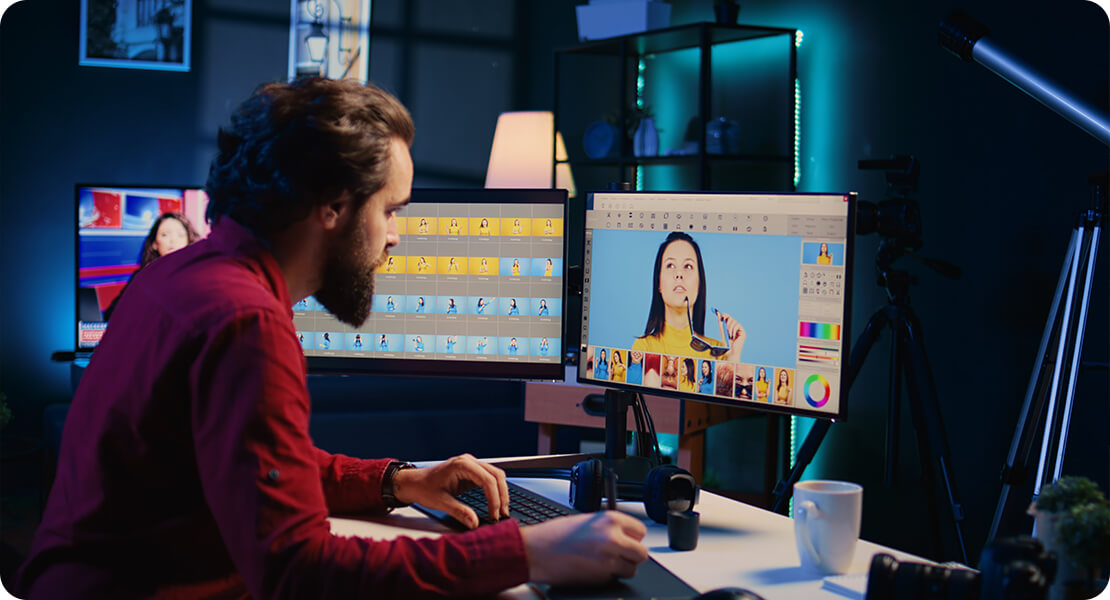
Combining Vector and Raster Graphics
Vector graphics are prized for their crisp lines and scalability, while raster images excel at conveying texture and depth. When you combine the two, you can achieve a balance between smooth, polished shapes and richly detailed imagery. For instance, a character’s outline and major colour blocks could be vector-based for clean scaling, while clothing patterns or environmental textures could be handled as raster layers. This pairing provides creative flexibility and helps you optimise file sizes, making it easier to adapt your work for different platforms and resolutions.
By experimenting with these hybrid animation techniques, creators can discover new forms of expression that go beyond traditional boundaries. Whether you’re seeking to capture a sense of realism, evoke an ethereal mood, or highlight handcrafted details, hybrid methods let you pick and choose the best tools for each task. As technology continues to evolve, so do the possibilities for blending different styles into one captivating final product. Embracing these approaches can breathe new life into your projects, enabling you to stand out in a crowded market and tell stories in ways your audience has never seen before.
AI-Assisted Animation
Artificial intelligence is no longer a buzzword—it’s a powerful tool that’s transforming animation workflows. AI-assisted animation helps automate repetitive tasks, such as in-betweening and lip-syncing, freeing up valuable time for creativity. More importantly, these tools can suggest stylistic enhancements and generate variations that spark new ideas. As AI continues to improve, expect it to become an integral part of both pre-production and post-production processes.
Let’s explore some exciting ways AI is transforming animation and making your creative process a whole lot smoother:
• Automated In-Betweening:
Imagine not having to draw every single frame manually. With AI, you can generate those in-between frames automatically, ensuring your animations flow seamlessly without all the tedious work.
AI-Enhanced Lip Sync:
Ever wished you could perfectly match mouth movements to dialogue with minimal effort? AI tools can analyse your audio and create accurate facial expressions and lip movements, freeing you up to focus on the bigger picture.
Style Transfer Magic:
If you’re keen on experimenting with different artistic looks, AI-driven style transfer can apply the unique aesthetics of your favourite paintings or animations to your work. It’s a fantastic way to explore new visual styles without starting from scratch.
Procedural Character Movement:
Let AI handle the heavy lifting when it comes to realistic motion. By learning from motion-capture data, these tools can generate lifelike character movements on the fly, letting you craft dynamic scenes with ease.
Smart Rigging and Weight Painting:
Setting up character rigs can be a real challenge. With AI, you can automate the process of determining bone structures and assigning weights, saving you precious time and technical hassle.
Accurate Pose Estimation:
Want to capture natural movements from real life? AI uses computer vision to track body movements, facial expressions, and even hand gestures from live footage, translating them into your animations effortlessly.
Predictive Animation Assistance:
Think of it as having a creative assistant that anticipates your next move. Some AI tools can suggest or auto-complete parts of your scenes, speeding up your workflow while keeping your unique style intact.
Dynamic Environment Creation: Beyond characters, AI can help you build immersive worlds. By analysing various landscapes and architectural designs, it can generate background elements and scenes, so you can concentrate on telling your story.
Each of these AI-powered techniques is designed to take the grunt work off your plate, allowing you to unleash your creativity and focus on the storytelling that truly matters. Enjoy experimenting with these tools, and watch your animation projects come to life like never before!
Immersive and Interactive Experiences
The demand for immersive experiences is skyrocketing. Audiences today crave interactivity, and animations are stepping up to the challenge. From augmented reality (AR) filters on social media to fully interactive animated narratives, creators are exploring ways to invite viewers to become part of the story. This trend not only deepens engagement but also opens up new revenue streams through interactive advertising and branded experiences.
If you’re excited about diving into immersive and interactive animation experiences, we’ve got some cool options to share with you:
Virtual Reality Storytelling:
Imagine strapping on a VR headset and stepping into an animated world where you control the view in every direction. This experience makes you feel like you’re actually inside the story, interacting with characters and environments in a 360-degree setting.
Augmented Reality Overlays:
Picture your everyday surroundings enhanced by digital animations. With AR, your phone or smart glasses overlay interactive, animated elements onto real-world scenes, turning a walk in the park into an engaging adventure.
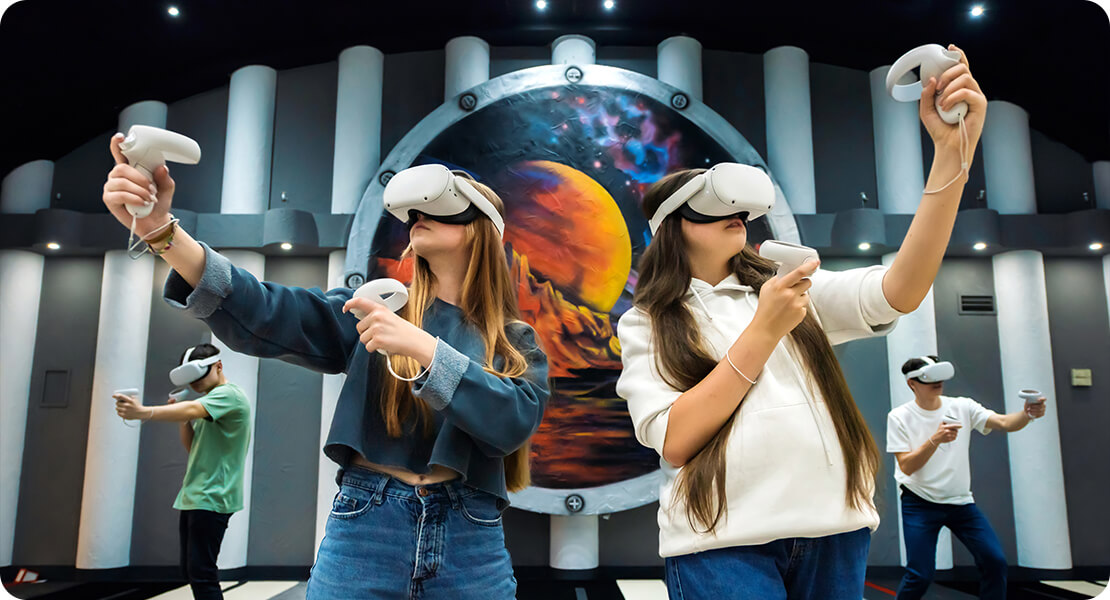
Interactive Animated Games:
Have you ever wanted to be part of the story? Interactive animated games let you make decisions that affect the narrative, transforming you from a passive viewer into an active participant in a beautifully animated world.
Live
Motion Capture Performances:
Imagine watching a live show where an actor’s movements are instantly captured
and transformed into an animated character right before your eyes. This
real-time interaction brings a dynamic energy to live performances, blending
the digital with the theatrical.
Projection Mapping and Immersive Installations:
Think about stepping into a space where walls and surfaces come alive with animated visuals. Projection mapping creates stunning displays on buildings or interiors, making the environment itself part of the storytelling.
360-Degree Videos and Animations:
Ever wanted to control your view of a scene? With 360-degree videos, you can look in any direction, exploring every detail of an animated environment at your own pace. It’s like having a front-row seat to a panoramic adventure.
Mixed Reality Experiences
Imagine a world where digital characters and objects blend seamlessly with your physical environment. Mixed reality lets you interact with animated elements that seem to exist right beside you, bridging the gap between the digital and the real.
Interactive Web Animations:
On some websites, you can literally click and play your way through animated stories. These interactive web experiences invite you to explore hidden layers of narrative, making every click a step deeper into the adventure.
Location-Based Animated Attractions:
Picture visiting a theme park where digital projections and physical sets merge to create a live, interactive spectacle. These attractions let you engage with animated characters in a way that adapts to your actions, making every visit a unique experience.
Each of these immersive options transforms the way you experience animation, turning watching into active participation. So why not try out a few and see how they can change your perspective on storytelling? Enjoy the adventure!
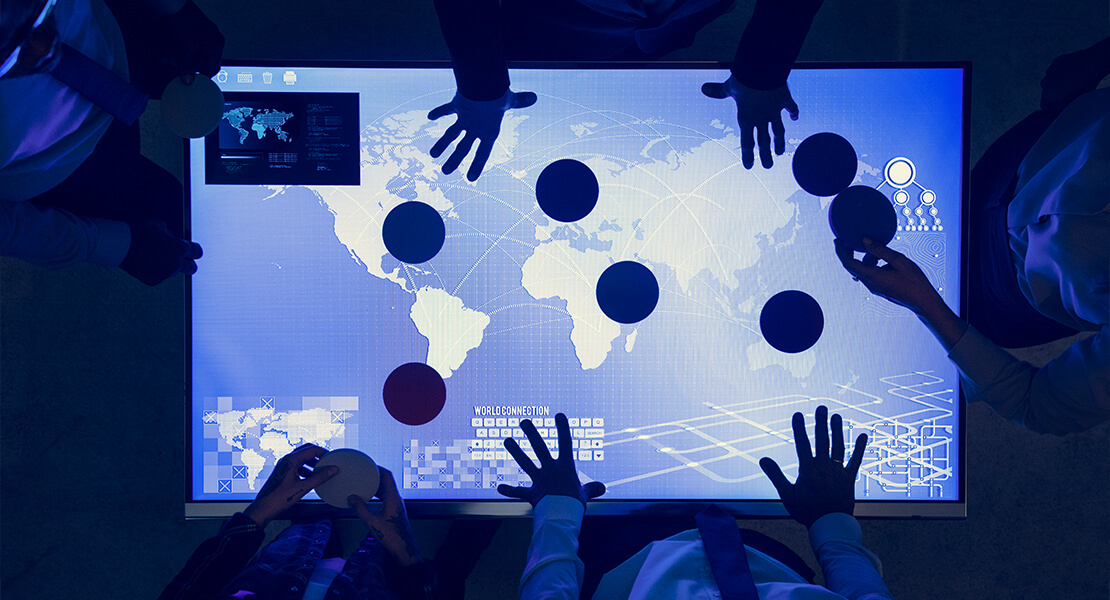
Sustainable and Ethical Production
Lastly, sustainability is making its mark on the animation industry. This year, more studios are rethinking how they create animated content, prioritising eco-friendly methods and fair labour standards to minimise their environmental impact and foster a positive work culture. Let’s explore why this shift is happening and what it means for animators, studios, and audiences alike.
First off, let’s talk about the environmental side of things. Animation can be resource-intensive, from the energy required to power render farms to the materials used for stop-motion sets. More and more studios are adopting green policies, such as using renewable energy sources, optimising server usage, and recycling set materials whenever possible. These changes not only reduce the carbon footprint but also save costs in the long run. If you’ve ever worked in a studio, you know how quickly overhead expenses can pile up. Switching to energy-efficient hardware and sustainable materials is a win-win for both the planet and the bottom line.
But sustainability isn’t just about the environment—it’s also about treating people fairly. Ethical production means ensuring everyone involved in the creative process works under safe, equitable conditions. That includes fair wages, reasonable working hours, and inclusive hiring practices. In recent years, many animation houses have been scrutinised for overtime and burnout. By committing to ethical production, studios are taking steps to protect their teams’ well-being. After all, a healthy, motivated workforce is more likely to produce outstanding work that resonates with audiences.
You might be wondering how this trend affects the final product. The good news is that a sustainable and ethical approach often leads to more innovative storytelling. When teams feel supported, they’re more willing to experiment and push creative boundaries. Additionally, the use of recycled or eco-friendly materials can spark unique visual styles and narratives. Some animators even incorporate themes of conservation and social responsibility directly into their films, adding depth and relevance to the stories they tell.
As a viewer or creator, you play a part in this movement, too. By supporting studios that prioritise sustainability and ethics—whether through your subscriptions, ticket purchases, or social media endorsements—you’re encouraging more companies to follow suit. This collective effort can shift the industry towards greener practices, better labour conditions, and storytelling that reflects our changing world.
In short, sustainable and ethical production in animation is no passing fad. It’s a growing movement that’s transforming how content is made, who gets to make it, and the impact it has on audiences everywhere. So, the next time you watch or work on an animated project, take a moment to appreciate the mindful choices that went into its creation. You’ll be part of a future where animation continues to captivate us—without costing the Earth or compromising the people who bring these stories to life.
Final Thoughts
Staying current in the animation field means embracing these innovations and integrating them into your workflow. Whether it’s harnessing the power of real-time rendering, experimenting with hybrid techniques, leveraging AI, crafting interactive narratives, or committing to sustainable production, the opportunities to evolve are endless. So, why not take these trends as your inspiration to push the boundaries of your creativity this year? The future of animation is bright, and it’s yours to shape! If you’re considering animation for your business, feel free to get in touch with us here at Spiel—we’d love to explore how we can bring your ideas to life.

